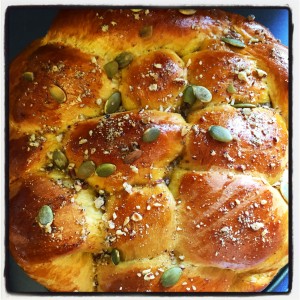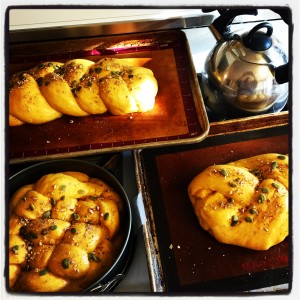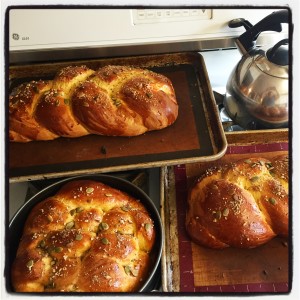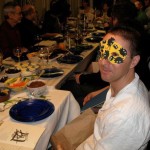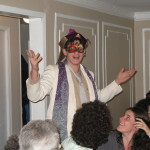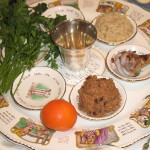After posting some photos of the annual Thanksgiving pumpkin challah, I got a lot of requests for the recipe. My tradition is to go to beloved cousins for an actual Thanksgiving dinner, and then to host a Shabbat post-Thanksgiving dinner the next night, which is generally also a celebration for the child whose birthday tends to fall right around then. So the pumpkin challah has now become part of the tradition of both of those dinners. While it’s certainly not a historic menu item for either Thanksgiving or Shabbat – it was surely not eaten by the Pilgrims or by our Jewish ancestors in the Old Country or even on the Lower East Side – it’s a classic example of Jewish American cross-fertilization and a tradition-in-the-making. Here is the recipe.
1 c boiled water
1/2 c cold water
1 c sugar
1 c vegetable oil
pinch of salt
2 1/2 T yeast
3 eggs
8-9 c flour
1 15 oz can pumpkin pie mix
handful of pumpkin seeds
1/4 c crushed pecans
Optional: Extra spices or cinnamon sugar
1. Boil 1 cup water.
2. Put one cup of oil, pinch of salt, and one cup of sugar in large bowl or Kitchenaid type mixer.
3. Pour the cup of boiling water over the mix and stir with the oil to dissolve the sugar and salt.
4. When fully dissolved, pour in the 1/2 cup cold water. Mix well.
5. Add 2 ½ t yeast to mix. Let sit for a few minutes.
6. Add three eggs.
7. Stir in 7 cups of flour.
8. Stir in 1 can pumpkin pie puree. (Optional – add additional cinnamon, cloves, and nutmeg if you want it to be spicier).
9. Knead. (Works best with a bread hook in Kitchenaid-type machine but can be done by hand).
1o. Add 1-2 additional cups of flour, depending on stickiness. After kneading, you want an elastic texture that barely sticks to your fingers.
11. Let dough rise in oiled bowl, preferably in warm, humid place. A slightly pre-warmed oven with the light on works great if the room is cold.
12. When dough has risen, punch it down, divide into 3 or 4 balls, and braid each one into a challah. You can make a round loaf and put into an oiled springform pan, or a bundt pan. Otherwise use a silicon sheet or parchment paper on a baking sheet.
13. Let rise again.
14. Apply egg wash. Sprinkle with pumpkin seeds and pecan pieces. Or go wild and sprinkle with cinnamon sugar.
14. Bake at 350 until golden brown and the loaves make a hollow sound when tapped.
Enjoy!

